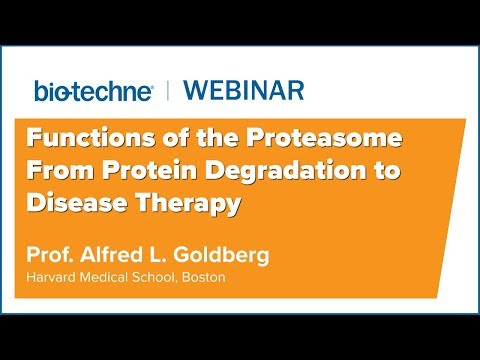iBiology has 3 videos - watch those first, they’re the most impt
then watch stuart schreiber on PROTACs
OE’ing just that beta5 unit seems to uniquely increase longevity (so KNOWING THIS may give u better predictive analytics of which proteins are not easily degraded by proteasomes).
“Chymotrypsin cleaves peptide bonds by attacking the unreactive carbonyl group with a powerful nucleophile, the serine 195 residue located in the active site of the enzyme, which briefly becomes covalently bonded to the substrate, forming an enzyme-substrate intermediate. Along with histidine 57 and aspartic acid 102, this serine residue constitutes the catalytic triad of the active site. These findings rely on inhibition assays and the study of the kinetics of cleavage of the aforementioned substrate, exploiting the fact that the enzyme-substrate intermediate p-nitrophenolate has a yellow colour, enabling measurement of its concentration by measuring light absorbance at 410 nm”
wow I didn’t know PKA positively phosphorylates and regulates
proteasome activity. i FINALLY broke through and understand the
PKA/PKB/PKC pathways at last
acetylation increases trypsin-like (T-L) activity only
Wow https://www.frontiersin.org/articles/10.3389/fmolb.2019.00048/full#B204 is such a good paper
2.4.3. Carbonylation
Carbonylation is an irreversible oxidative modification, which implies the introduction of a carbonyl group (-CO) into a protein (Dalle-Donne et al., 2006; Madian and Regnier, 2010). Protein carbonyl groups can be generated indirectly by forming adducts with lipid peroxidation products (e.g., aldehyde HNE; section 2.2.3) or reactive carbonyl derivatives produced by the reaction of reducing carbohydrates (e.g., ketoaldehyde MGO; section 2.2.4), or directly by oxidative cleavage of the protein backbone or amino acid side chain with free radicals. Direct carbonylation can be induced by 15-deoxy-Δ12, 14-prostaglandin J2 (15d-PGJ2; see section 2.4.4), and caused RPT3 carbonylation in human neuroblastoma cells (Ishii et al., 2005). This modification impaired RPT3 ATPase activity, and decreased degradation of ubiquitinated proteins in cell lysates, accompanied with enhanced accumulation of these proteins. In conclusion, carbonylation of proteasomes seems to have a negative effect on 26S proteasome activity.

